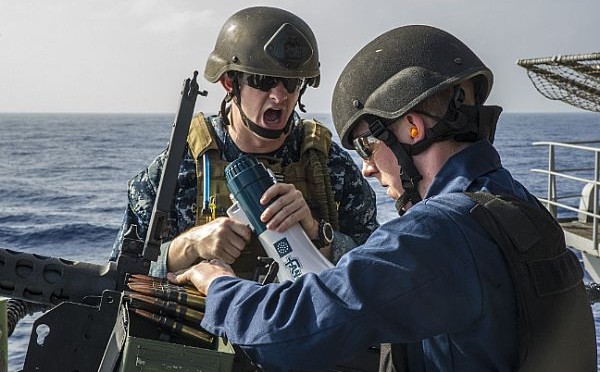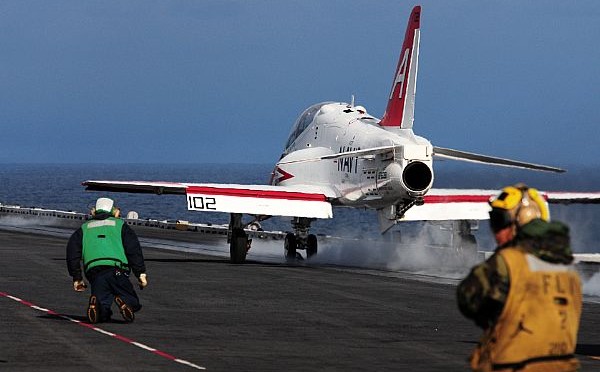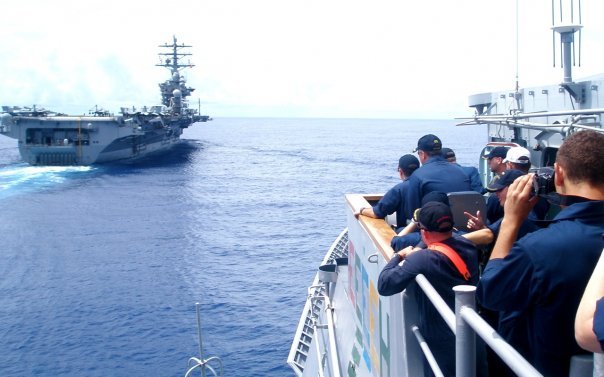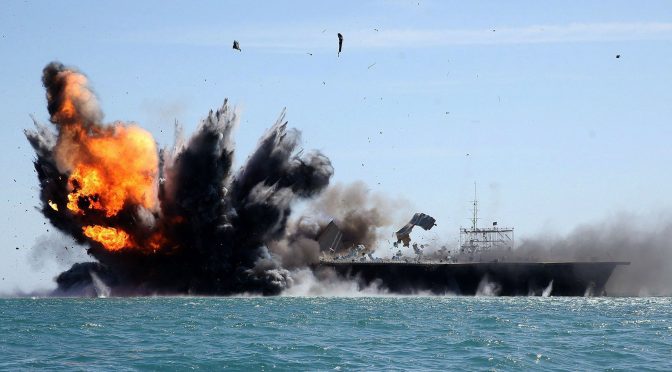Men and women volunteering to serve their country during a time of war have a right to be taken seriously. They deserve a leadership capable of serving them as they serve the nation, throughout all phases of their career and current conflicts.
Three articles written in two separate military thought forums have put leadership on notice of late:
In “Millennials Bring a New Mentality: Does it Fit?” by CDR Darcie Cunningham, USCG, published in USNI’s Proceedings Magazine, the author argues that the most recent generation of military warfighters is lacking in adherence to the author’s view of military traditions, customs, and courtesies. She argues that millennials should recognize their place as subordinates and refrain from questioning senior leaders or asking “Why?” Cunningham writes, “We take pride in the missions we perform, serving as humble servants to the public. If millennials are more focused on what’s in it for them, they may not be the right fit.”
In “Fireproof Commanding Officers” by LT Lawrence Heyworth IV, USN, published in USNI’s Proceedings Magazine, the author discusses recent high-profile firings of commanding officers. He argues that “a career built on solid ethics and character development is the best way to safeguard naval leaders from relief due to personal misconduct.” He debunks the myths that ethically weak COs are either “bad apples” or “of weak moral character.” Rather, Heyworth concludes that commanding officers are predisposed to ethical failures due to their access to power, resources, an inflated sense of self-worth, and a loss of focus.
Unlike Cunningham’s analysis, Heyworth does not argue that senior leaders are “more equipped to take on increased levels of responsibility” based solely on their time in service. Rather, he argues that “deep and consistent introspection,” reading philosophy, and applying moral lessons each day can help leaders avoid ethical shortcomings and set the example.
Finally, in “Wasting the Warrior Culture: The Story of Frank” by Baz Khan, published in The Havok Journal, the author centers his discussion on a quote attributed to the Greek philosopher Heraclitus:
“For every one hundred men you send us, ten should not even be here. Eighty are nothing but targets. Nine of them are real fighters; we are lucky to have them, they the battle make. Ah, but the one. One of them is a warrior. And he will bring the others back.”
In his article, Khan argues that “Frank” is “the one;” “exactly the kind of knuckle dragging gunslinger that you want at your side when everything goes to shit, you’re surrounded and you need someone to help you carve an emergency exit out of lead, broken bones and charred human flesh.” But, as with most true warriors, Frank is “pretty rough on the edges;” he struggles with alcohol to cope with the Post-Traumatic Stress Disorder that comes from numerous, highly kinetic deployments in Iraq and Afghanistan.
Khan’s analysis is of the Marine Corps, but it is spot-on for the naval service as well:
“We were willing to overlook some cosmetic defects while we were fighting a war on two fronts but now it appears that these violent and coarse warriors are unacceptable in our post-war, garrison focused military. It seems that guys like Frank do not have a place in our modern Marine Corps. We are putting down our scarred and battle weary war dogs and promoting porcelain dolls in their place. Haircuts, close order drill and trouser creases now hold greater appeal to promotion boards than Purple Hearts, valor awards and combat experience.”
Sailors, soldiers, airmen, and Marines swear an oath to “uphold the Constitution of the United States.” These men and women dedicate their lives–regardless of their service or proximity to combat–to that end. (And contrary to what CDR Cunningham writes, they do not need to be “reminded of the current economy and associated unemployment rate.” That sentiment cheapens the service of thousands of young people.) And while I sympathize with the points brought out by LT Heyworth and agree that reflection and a strong moral compass is essential, our focus on the actions of commanding officers is misplaced.
Chief of Naval Operations Admiral Jonathan Greenert takes as his motto: “Warfighting First. Operate Forward. Be Ready.” If we are to regard his priorities seriously, it reasons that the warriors doing our warfighting should be first and foremost.
But in today’s Navy, they are an afterthought. Washington leadership passes down the law via Navy Knowledge Online (NKO) and mandatory trainings with pre-recorded speeches from the CNO and MCPON. The message of this training insinuates that the Navy has problems, and the leadership is here to fix them. Sexual assault, alcohol abuse, and other issues are lectured ad nauseum to sailors in computer programs and Page 13 forms, often at the expense of a commanding officer, division officer, of Chief Petty Officer addressing these concerns and setting the tone within the unit.
An American president once said, “There is nothing wrong with America that cannot be cured by what is right with America.” So it is with our Navy. When 99% of our sailors are doing the right thing, punishing the group for the misdeeds of a few is leadership that takes the easy way out. It is not worthy of the warriors that it serves.
In his seminal essay “The Institution as Servant,” Robert Greenleaf maintains that “caring for persons, the more able and the less able serving each other, is the rock upon which a good society is built.” The concept of servant leadership, inspired by Greenleaf, has only been around for about four decades, but those grasping its tenets have been some of the most successful military leaders of our time.
Above all, servant leadership is about putting the needs of the ship or sailor above the petty wants or needs of the leader. Servant leaders inspire a vision, develop their people, and maintain trust. They are loyal to each individual as much as possible; they are tenacious advocates for their people.
A return to servant leadership is imperative to the vitality and future of our service. The question leaders should ask is not, as CDR Cunningham suggests, “Will [sailors] truly be able to adapt to the service?” but rather, “How can I set my sailors up for success?”
Deeper still, a sense of servant leadership must permeate down from the top of our service. When we more easily promote people who look good on paper and have the blessing of bureaucracy, we are not serving our sailors as we should. When we perpetuate a “zero defect” mentality that banishes a sailor to the darkest corner of our service for any transgression, we are not serving our sailors as we should. When we look around every corner for “signs of insubordination or disrespect” instead of using our efforts to help our people excel, we are not serving our sailors as we should.
LT Heyworth makes an excellent point: “The failure to lead by personal example and the impact of a CO’s relief can have far-reaching and long-lasting consequences for a crew of more than 250 sailors.” When leaders systematically fail to inspire vision, establish trust, and recognize excellence in their sailors, the effects are even farther-reaching and longer-lasting. This is the current troubling state of retention and advancement throughout both the officer and enlisted corps.
CDR Cunningham’s exhortations–“They should be reminded that there’s a long line of people outside the door waiting for a Coast Guard spot”–are not the leadership answer for the generation she writes about. Khan comes closer to the truth:
“There will come a time in the future when our nation will once again find itself in a time of great darkness and evil. Young men, yet untested in battle, will look to their leaders for guidance and find instead hollow vessels without the steel or stones necessary to lead men into battle. The painted soldiers on the parade fields will shake in terror and search desperately for the rough men like Frank who shepherded them through the last conflict for guidance only to find that they have all been weeded out of service. This is unacceptable.”
By serving those under our care as leaders, by advocating for them–even against a stubborn naval bureaucracy built up over years of legislating and obfuscating–and by delivering vision, honesty, and empathy, we can begin to “course-correct” the troubling leadership issues of this century. The men and women volunteering for selfless service deserve this effort, every day.
Roger Misso is a Naval Flight Officer in the E-2C Hawkeye and former director of the Naval Academy Foreign Affairs Conference. The views expressed here are his own and in no way represent the views of the US government, US Navy, or his unit.
 Alex Clarke of Phoenix Think Tank discusses his upcoming Sea Control Falklands series with associate editor Chris Stockdale.
Alex Clarke of Phoenix Think Tank discusses his upcoming Sea Control Falklands series with associate editor Chris Stockdale.





 Aviators are well-trained before reporting to the Fleet and we have established the practical meaning of wings. What is the true nature of the product, though? On Day 1, the Naval Aviator Nugget will already have demonstrated proficiency at landing aboard a carrier during day and night operations. During his initial weeks in the squadron, he could be entrusted to conduct mid-air refueling, air-to-ground strike, strafing, and close-air-support missions, carrier qualifications, or high-value air-asset escort duties. With these baseline skills, the new aviators are immediately useful to their squadrons and are able to jump into the rigorous Strike Fighter Tactics Instructor-lead curriculum.
Aviators are well-trained before reporting to the Fleet and we have established the practical meaning of wings. What is the true nature of the product, though? On Day 1, the Naval Aviator Nugget will already have demonstrated proficiency at landing aboard a carrier during day and night operations. During his initial weeks in the squadron, he could be entrusted to conduct mid-air refueling, air-to-ground strike, strafing, and close-air-support missions, carrier qualifications, or high-value air-asset escort duties. With these baseline skills, the new aviators are immediately useful to their squadrons and are able to jump into the rigorous Strike Fighter Tactics Instructor-lead curriculum.


